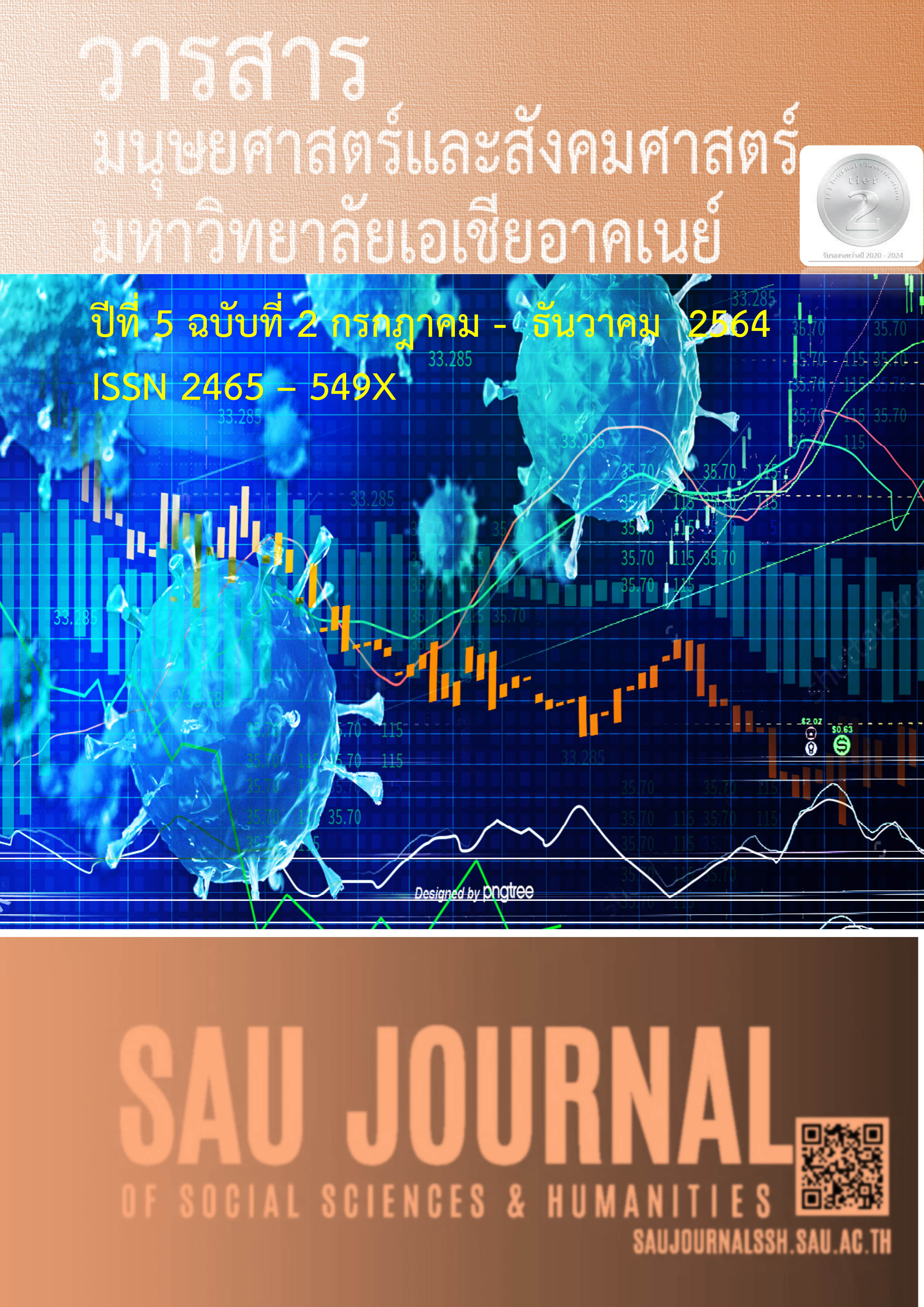หลักการพัฒนาคุณค่าตราสินค้าในมิติการตอบสนองความพึงพอใจของลูกค้า การมีส่วนร่วมสร้าง และการจัดการประสบการณ์ลูกค้าเพื่อสร้างความได้เปรียบทางการแข่งขันสายผลิตเดียวกัน
คำสำคัญ:
การมีส่วนร่วมสร้างของลูกค้า, การจัดการประสบการณ์ลูกค้า, การจัดการความร่วมมือของลูกค้า, ความพึงพอใจของลูกค้าบทคัดย่อ
บทความนี้มีวัตถุประสงค์เพื่อสังเคราะห์ แนวคิดการพัฒนาคุณค่าแบรนด์สินค้าในมิติการตอบสนองความต้องการของลูกค้า การมีส่วนร่วมสร้าง และการจัดการประสบการณ์ลูกค้าเพื่อสร้างความได้เปรียบทางการแข่งขันสายผลิตเดียวกัน โดยใช้การสังเคราะห์ทฤษฎี และงานวิจัยที่เกี่ยวข้อง นำมาพัฒนาเพื่อเป็นแนวความคิดที่ใช้ประกอบด้วยปัจจัยต่าง ๆ คือ การมีส่วนร่วมสร้างของลูกค้า การจัดการประสบการณ์ลูกค้า การจัดการความร่วมมือของลูกค้า และความพึงพอใจของลูกค้า ซึ่งนำไปสู่การพัฒนาคุณค่าตราสินค้า โดยมีองค์ประกอบสำคัญ 5 ปัจจัยหลัก ได้แก่ การรับรู้แบรนด์ คุณภาพที่รับรู้ กลุ่มตราสินค้า ภาพลักษณ์ของแบรนด์ และความจงรักภักดีต่อแบรนด์ การพัฒนาคุณค่าตราสินค้าให้ประสบผลสำเร็จนั้น องค์การธุรกิจจะต้องคำนึง 3 ปัจจัยหลักอันสำคัญ ได้แก่ การมีส่วนร่วมสร้างของลูกค้า การจัดการประสบการณ์ลูกค้า และการจัดการความร่วมมือกับลูกค้า ซึ่งแนวคิดการวิจัยนี้มีอิทธิพลที่นำไปส่งเสริมและพัฒนาคุณค่าตราสินค้าได้ในมิติการตอบสนองความต้องการของลูกค้าเพื่อสร้างความได้เปรียบทางการแข่งขันในสายผลิตเดียวกัน
เอกสารอ้างอิง
Beth Coppinger, Chris Poole & Simon Bailey. (2017). Focus on Six Capabilities to Master Supply Chain Customer Collaboration for Value Creation. pp. 1-12. Retrieve 25, Dec 2019 from cmworld.com/wpcontent/uploads/2018/10/focus-on-six-capabilities-to.pdf
Bovee, C. L., Houston, M. J., & Thill, J. V. (1995). Marketing. (2 nd ed.). London: McGraw-Hill.
Cohen, M., Agrawal, N., and Agrawal, V. (2006). Achieving Breakthrough Service Delivery through Dynamic Asset Deployment Strategies. Interfaces, 36(3), pp. 259-271.
Dennis M. J. & Kambil A. (2003). Service Management: Building Profits after the Sale. Supply Chain Management Review, (1), 42-49.
Epstein M. J., & Yuthas K. (2007). Managing customer value. In Management Accounting Guideline. The Society of Management Accountants of Canada, The American Institute of Certified Public Accountants and The Chartered Institute of Management Accountants: Mississauga, ON.
Gentile, C., Spiller, N. & Noci, G. (2007). How to Sustain the Customer Experience: An Overiew
Of Experience components that Co-create Value With the Customer. European
Management Journal, [e- Journal] 25(5), 395-410
Hardin, J. & Keller, R. (1988). The behavior and function of bottle cells during gastrulation of Xenopus laevis. Development, 103(1), 211-230.
Kumar V, Venkatesan R, Bohling T, Beckmann D. (2008). Th e power of CLV: managing customer lifetime value at IBM. Marketing Science, 27(4): 585–599. DOI: 10.1287/mksc.1070.0319
Kotler Philip, Keller Kevin Lane. (2012). Marketing management. 14th. Pearson Education, Inc. United States of America. pp. 242-260.
Kotler Philip, Keller Kevin Lane. (2012). Marketing management. 14th. Pearson Education, Inc. United States of America. pp. 242-260.
Rajgopal, S., Venkatachalam, M. & Kotha, S. (2000). Does the Quality of Online Customer
Experience Create a Sustainable Competitive Advantage for E-commerce Firms?
Retrieved 24 January,2019 from http://dx.doi.org/10.2139/ssrn.242774
Randall, Geoffrey.(2000). English, Book, llustrated edition: Branding: a practical guide to
Planning your strategy. 2nd Edition. Published London: kogan Page.
Schiffman, L. & Kanuk, L. (2007). Consumer behavior. (5th ed.). Englewood Cliffs, NJ: Prentice-Hill.
Development, Book manuscript in Swedish.
Solveig Wikstrom. (1995). the customer as co‐producer. European Journal of Marketing, 30(4), 6-19. https:// doi.org/10.1108/03090569610118803
Verhoef, P.C., Lemon, K.N., Parasuraman, A., Roggeveen, A., Tsiros, M. & Schlesinger, L.A.
(2009). Customer Experience Creation: Determinants, Dynamics, and Management
Strategies. Journal of Retailing, 85(1), 31-41.
Wikstrom, S. & Lundkvist, A. (1995). The Role of Information Technology in Interactive Business.
Womack, J.P., Jones, D.T. & Roos, D.(1990). The Machine that Changed the World, Macmillan,
New York, NY.






